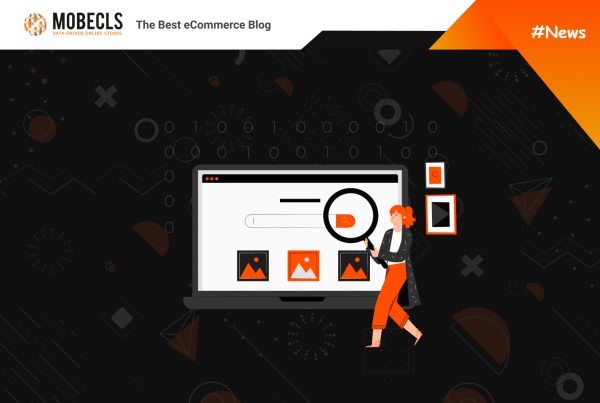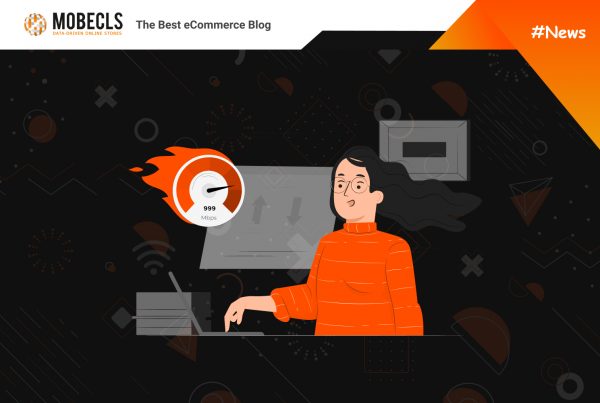Cybersecurity remains a hot topic since the invention of the Internet. Data breaches and hacker attacks happen on a daily basis all over the world. During the last decade, we witnessed unprecedented data breaches that affected billion people. For example, Marriott data breach that affected 500 million people, Twitter — 300 million.
The largest data breach discovered in the history of the Internet was revealed in 2016. Yahoo! announced that in 2013-2014 there were two data breaches affected 3 billion people. Hackers got access to the names, email addresses, telephone numbers, encrypted or unencrypted security questions and answers, dates of birth, and hashed passwords. The accident entailed insane public outcry and series of investigations. As a result, the company’s value reduced by 350 million $ and it lost its credibility.
eCommerce is a tidbit for hackers as online stores keep enormous amounts of users’ data starting from names to credit card information. The sphere loses billions $ each year. Unfortunately, these figures continue to grow.
Cybersecurity becomes more relevant than ever. In 2019, investments in online security are expected to grow by 8.7 %. A growing level of cybercrimes caused the adoption of numerous laws aiming to protect business and users’ privacy. Moreover, it caused the approval of GDPR (General Data Protection Regulations).
Today you can’t conceal a fact of a data breach even if it affected only one user. If you violate GDPR you will be fined up to 20 million € or up to 4% of the annual worldwide turnover of the preceding financial year in case of an enterprise, whichever is greater.
eCommerce Security Threats
Malware
Malware occupies top places at numerous lists of eCommerce threats. This problem concerns most of the retailers all over the world because the smallest gap in your firewall can cause grave problems. When a hacker breaks through cyberdefense he spreads his plague throughout your body. Usually, this malware is used to collect and steal your users’ personal data like passwords, credit card information, etc. The best thing you can do to protect your customers and yourself is to invest in security software.
Phishing
One of the most common eCommerce cybercrimes that starts with just a letter. A fraud pretends to be an Amazon, Google, Apple or another company representative. Then he asks to provide personal data to solve a technical issue. Usually, they are pretending pretty well because they copy the company’s style of communication and emails. There’re numerous ways to prevent this threat. For example, using domain emails and installing effective firewalls. Nevertheless, phishers are hard to reveal as they are constantly improving their schemes. In 2014, phishers deceived 145 million eBay users. Proper employee education and security software can do a lot in phishing prevention.
Editor’s pick: Top 5 eCommerce Fraud Schemes
Human Error
A lost smartphone or laptop can be a serious cyber threat to your business. You must be sure that your database is secured and your employees don’t use personal gadgets to access unsecured data. One more widespread case is providing server access to workers who want to finish the work at home. It’s bad enough that they will use their personal device and unsecured connection. It doesn’t matter how much you trust your colleagues, it’s better to be safe than sorry.
DDOS Attacks
Distributed denial-of-service overloads your servers, slows them down or even take them offline. When an attack happens, hackers send thousands of requests to your website from thousands of IP addresses. As a result, users just can’t operate your website and make purchases. It leads to great revenue losses and kills the user experience.
Editor’s pick: Poor web performance kills your business.
eCommerce Security Trends
These eCommerce threats define what security aspects worry merchants the most:
Access Management
AM consists of the next fundamental components:
The process of identifying users;
- What is their role in the system and how do they get it;
- Adding, removing, updating users’ roles;
- Assigning level of access;
- Protecting data and the system itself.
Access management should contain all the necessary tools to track and store login information, manage the user database and assignment/removal of access levels. Identity management reduces the risks of internal and external data breaches; decreases manual works and optimizes business processes; enforces user authentication and validation.
Infrastructure Security
It includes firewalls, user authentication and encryption.
All the users’ information and passwords should be encrypted because you may repeat Twitter’s case. A small system bug caused a 300 million data breach as it broke the hashing process and all the passwords were being saved in plain text. We don’t know how many people used this loophole before it was fixed, but the passwords of 300 million people were freely available for a certain time.
Use HTTPS to protect the information about Payment Card Industry. A verified and valid certificate from a competent Certificate Authority will help you to win trust among your customers. You can even install it for free.
It’s not enough just to install a firewall and think that an enemy won’t bypass it. Every component of your back end should be like an uncrackable redoubt. Yep! Cybersecurity is similar to warfare. Even if a hostile broke through the first fortification, the next one should be harder to take. Your aim is not to let enemies capture your castle. Otherwise, your Empire will go to waste.
Data Security
To enhance payment data protection use HTTPS and payment gateways. The majority of payment gateways already use solid algorithms to encrypt all the information.
To protect your eCommerce and clients’ data use CRM systems. They will allow you to manage your database and take care of customers’ personal information with no risk. For God’s sake, don’t store data like these on Google Sheets.
Main Security Principles
Now we can highlight the main security principles to enhance your eCommerce cybersecurity:
- Implement a strong identity foundation
- Enable traceability
- Apply security at all the layers
- Automate security best practices
- Protect data in transit and at rest
- Keep people away from data
It’s hard not to face any eCommerce cyber threat in 2019. No one is safe now. The only thing you can do is just to be prepared for a possible threat in order not to fall before the enemy.
![]()
Mobecls team offers fixed-price service packages for Magento store support. Moreover, we’ll help you to choose a plan according to your business needs and specifics. The starting price is $2000. You can also select the number of working hours and the range of services. A service package may include updates, the installation of modules, bug fixing, SEO support and many more. Contact us and we’ll help you.




